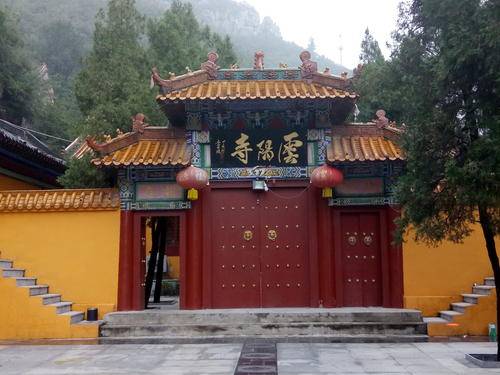Yunyang Temple
Originally named Shousheng Temple, it was first built during the Tang Dynasty. The existing structures include the Mountain Gate, the Hall of the Four Heavenly Kings, the Hall of the Three Western Saints, and the Mahavira Hall. To the northeast of the temple, there are three square brick pagodas with dense eaves, built during the Yuan, Ming, and Qing Dynasties respectively. Yunyang Temple is situated by the mountain and water, ascending layer by layer with the terrain. The four groups of buildings are arranged sequentially on four platforms with a height difference of 5 meters. At its peak, the total building area reached over 20,000 square meters.
Yunyang Fort
Originally built during the Sui and Tang dynasties, it was a strategic pass connecting the provinces of Henan and Shanxi. It has been a contested site for military strategists throughout history. The fort gate is made of bluestone, with stone battlements on top.
Qingjing Palace
Qingjing Palace was first built in 1750 AD (the fifteenth year of Emperor Qianlong's reign in the Qing Dynasty). It is currently the only preserved beamless architectural complex from the Qing Dynasty in China. It faces south and is built against the mountain. In the center is the Sanhuang Pavilion, with the Wangmu Hall on the left and the Yuhuang Pavilion on the right. All are double-story pavilion-style buildings. Its architectural style breaks the symmetrical axis layout of traditional Buddhist temples and Taoist temples, combining Eastern cave dwellings with Western pavilions. All materials used are stone, making it a unique example of ancient architecture in the Central Plains.
Zijin Peak
Zijin Peak is the main peak of Shennong Altar, with an altitude of 1028 meters. It is known as the 'Jade Pillar of the Central Sky', standing proudly at the top of the mountains, towering and straight into the clouds. Its top is a 100-square-meter platform surrounded by cliffs. Ancient white pines grow on the cliffs. There is also a stone pit on Zijin Peak, about one meter in length, width, and depth, which is said to be the place where Fuxi listened to the wind and comprehended the Eight Trigrams. It is called the 'Eight Trigrams Pit'.











